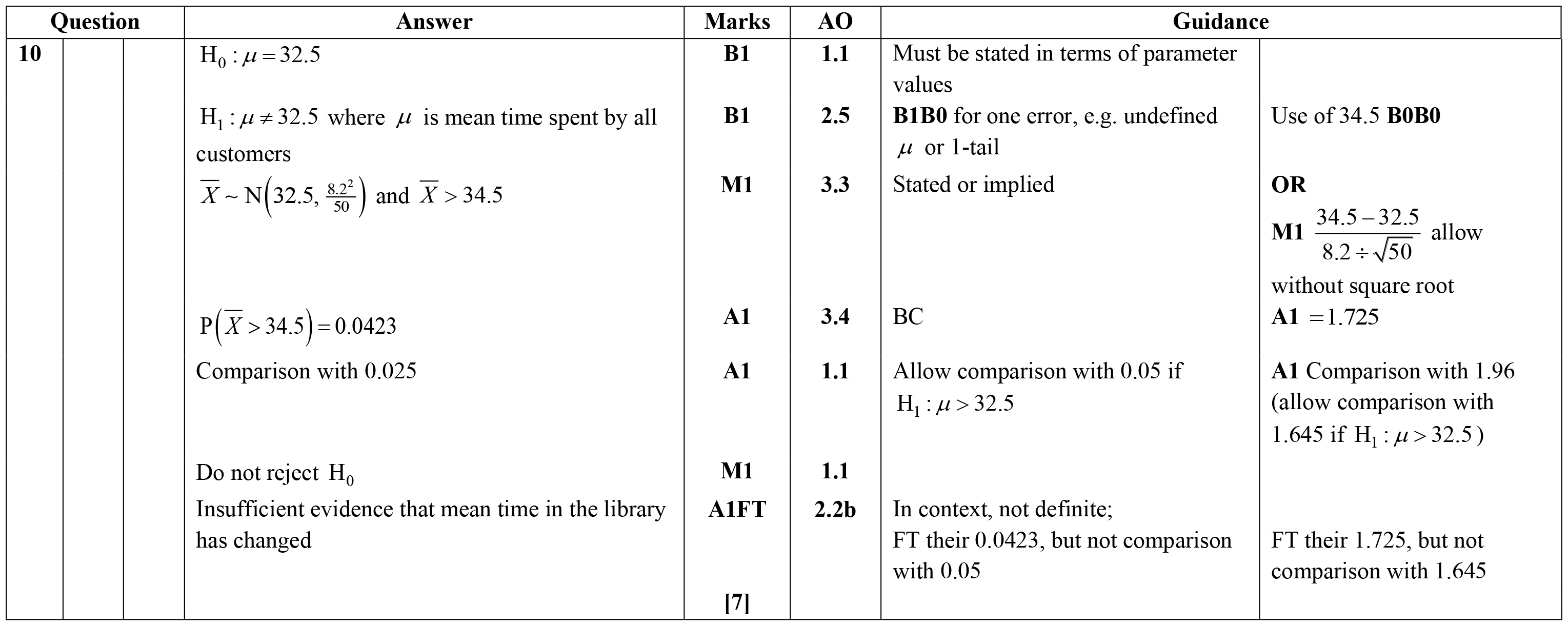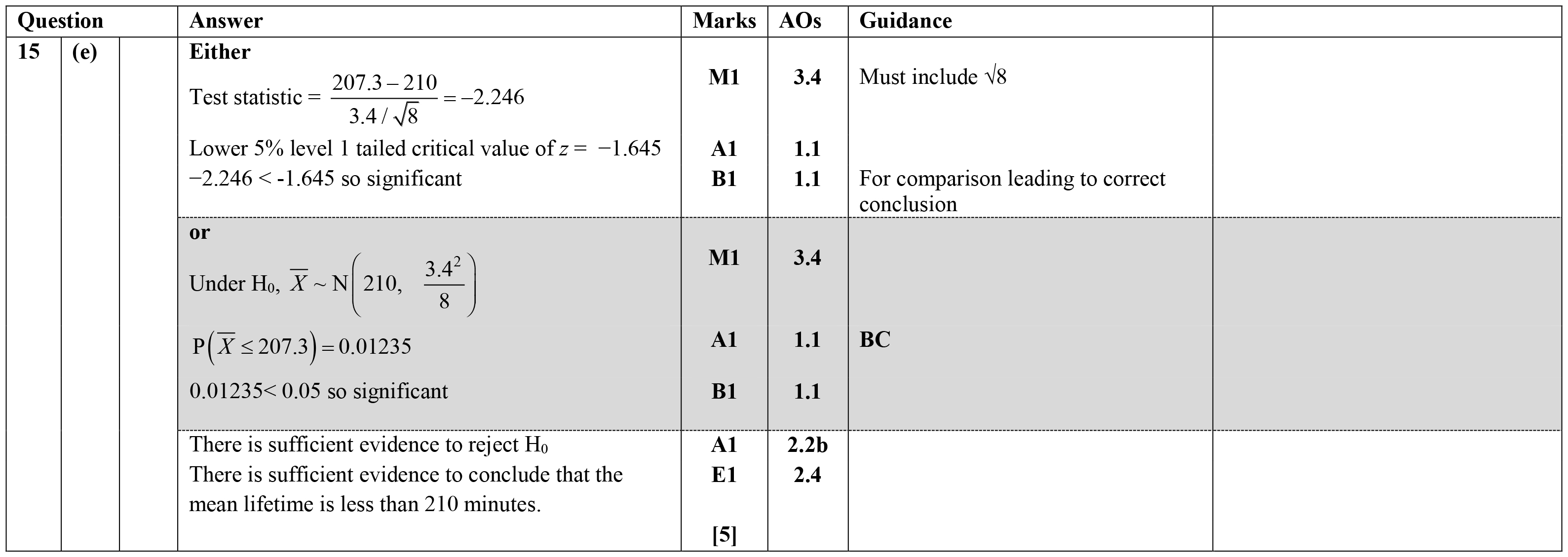A Level Maths - hypothesis tests and the art of being non-assertive
28 February 2023
Hints and Tips - 5 minute read
 Steven Walker, OCR Maths Subject Advisor
Steven Walker, OCR Maths Subject Advisor
In this updated blog, first published in Sept 2020, I will look at the issues raised by examiners marking hypothesis test questions in A Level Maths. They are equally applicable to hypothesis test questions in the statistics option in Further Maths too.
Using a writing frame
Some teachers provide their students with a writing frame template for answering hypothesis test questions. There are 7 key features of a hypothesis test:
- define null and alternative hypotheses
- define parameter to be investigated
- state test statistic to be calculated
- accurately calculate the test statistic
- compare this result to theoretical probability
- decide whether the evidence supports the rejection of the null hypothesis
- state conclusion in context, referencing the defined parameter.
Unstructured hypothesis question
SAM H240/02 Question 10 is an example of a 7 mark unstructured hypothesis test question.
| 10 |
In the past, the time spent in minutes, by customers in a certain library had mean 32.5 and standard deviation 8.2.
Following a change of layout in the library, the mean time spent in the library by a random sample of 50 customers is found to be 34.5 minutes.
Assuming that the standard deviation remains at 8.2, test at the 5% significance level whether the mean time spent by customers in the library has changed. |
|
[7] |
SAM H240/02 Question 10 is a typical mark scheme for an unstructured hypothesis test.

Structured Problems
The writing frame approach could also be used for more structured problems.
SAM H640/02 Question 15 (e) is an example of a structured hypothesis test question.
| (e) |
A random sample of 8 Ultrapower batteries is selected. The mean lifetime of those batteries is 207.3 minutes.
Carry out a hypothesis test at the 5% level to investigate whether the mean lifetime is as high as stated. You should use the following hypotheses H0:µ=210, H1:µ<210, where µ represents the population mean for Ultrapower batteries.
You should assume that the population is normally distributed with standard deviation 33.4. |
|
[5] |
SAM H640/02 Question 15 (e) is the mark scheme for this structured hypothesis test question.

Sketch the distribution curve
A common mistake is to misinterpret the outcome of the test when comparing the test statistic with the theoretical probability value.
A sketch can help candidates identify the appropriate rejection region(s) for a one-or two-tail test.

H0 or H1
A hypothesis test investigates a proposed mathematical model to determine whether there is sufficient evidence from a sample of data to reject the defined null hypothesis.
A common misconception is that if you reject H0 then you have decided that H1 is correct. In fact, if the evidence supports rejecting H0 then you should re-evaluate the proposed model.
As a consequence, conclusions expressed in terms of H1 are not strictly correct and may not be condoned in the exam.
Some statisticians feel that the phrases ‘Accept H0’ or ‘Reject H0’ are overly assertive since the test decides whether or not we have enough evidence from the sample data to support H0; it doesn’t prove whether H0 is true or false.
Comparisons are always best expressed in terms of either ‘There is sufficient evidence at the 5% level to reject H0’ or conversely ‘There is insufficient evidence at the 2% level to reject H0’.
Interpret in context
A common issue seen with otherwise excellent responses is where the student does not refer their result back to the context of the problem asked.
For example, in the SAM H240/02 Q10 above, a generic conclusion of ‘the mean has not changed’ would not get that final mark.
Similarly, in the SAM H640/02 Q15(e) it would not be enough to state ‘the mean has decreased’.
It is good practice to make sure that the final conclusion refers to the parameter defined at the start. This should also be non-assertive, using phrases such as ‘There is sufficient evidence to suggest…’ or conversely ‘There is insufficient evidence to suggest…’
Supporting students
We have produced delivery guides (that include links to free resources) and check in tests for each section of the A Level Maths specifications:
You may also find the following resources useful:
Stay connected
Are there any maths topics you think students are currently struggling with? Let us know via the comments below, or you can email us at maths@ocr.org.uk, call us on 01223 553998 or tweet us @OCR_Maths. You can also sign up for email updates to receive information about resources and support.
About the author
Steven joined OCR in 2014 and has worked on the redevelopment of OCR’s Entry Level, GCSE (9-1), FSMQ and A Level Mathematics/Further Maths qualifications. He now focuses mainly on supporting the Level 3 qualifications. Steven originally studied engineering before completing a PGCE in secondary mathematics. He began his teaching career with VSO in Malawi and has taught maths in both England and overseas.
By the same author